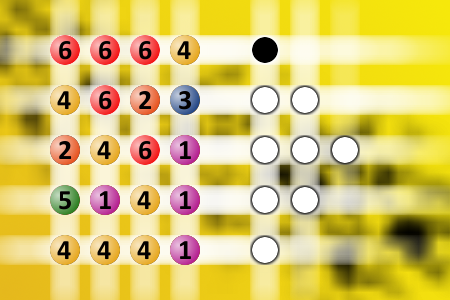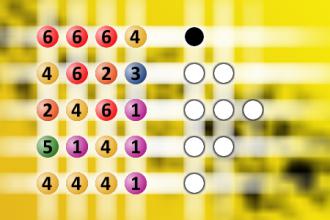What a winning combination?
The computer chose a secret code (sequence of 4 digits from 1 to 6). Your goal is to find that code. Black circles indicate the number of hits on the right spot. White circles indicate the number of hits on the wrong spot.Correct answers: 32
The first user who solved this task is Djordje Timotijevic.
#brainteasers #mastermind

These two guys had both just g...
These two guys had both just got divorced and they swore they would never have anything to do with women again. They were best friends and they decided to move up to Alaska as far north as they could go and never look at a woman again.
They got up there and went into a trader's store and told him, "Give us enough supplies to last two men for one year."
The trader got the gear together and on top of each one's supplies he laid a board with a hole in it with fur around the hole.
The guys asked "What's that board for?"
The trader said, "Well, where you're going there are no women and you might need this."
They said, "No way! We've sworn off women for life! Women are nothing but trouble."
The trader said, "Well, take the boards with you, and if you don't use them I'll refund your money next year.
"Okay," they said and left.
The following year this guy came into the trader's store and said
"Give me enough supplies to last one man for one year."
The trader said "Weren't you in here last year with a partner?"
"Yeah," said the guy.
"Where is he?" asked the trader.
"I shot him," said the guy.
"Why?"
"I caught him in bed with my board!"
They got up there and went into a trader's store and told him, "Give us enough supplies to last two men for one year."
The trader got the gear together and on top of each one's supplies he laid a board with a hole in it with fur around the hole.
The guys asked "What's that board for?"
The trader said, "Well, where you're going there are no women and you might need this."
They said, "No way! We've sworn off women for life! Women are nothing but trouble."
The trader said, "Well, take the boards with you, and if you don't use them I'll refund your money next year.
"Okay," they said and left.
The following year this guy came into the trader's store and said
"Give me enough supplies to last one man for one year."
The trader said "Weren't you in here last year with a partner?"
"Yeah," said the guy.
"Where is he?" asked the trader.
"I shot him," said the guy.
"Why?"
"I caught him in bed with my board!"

